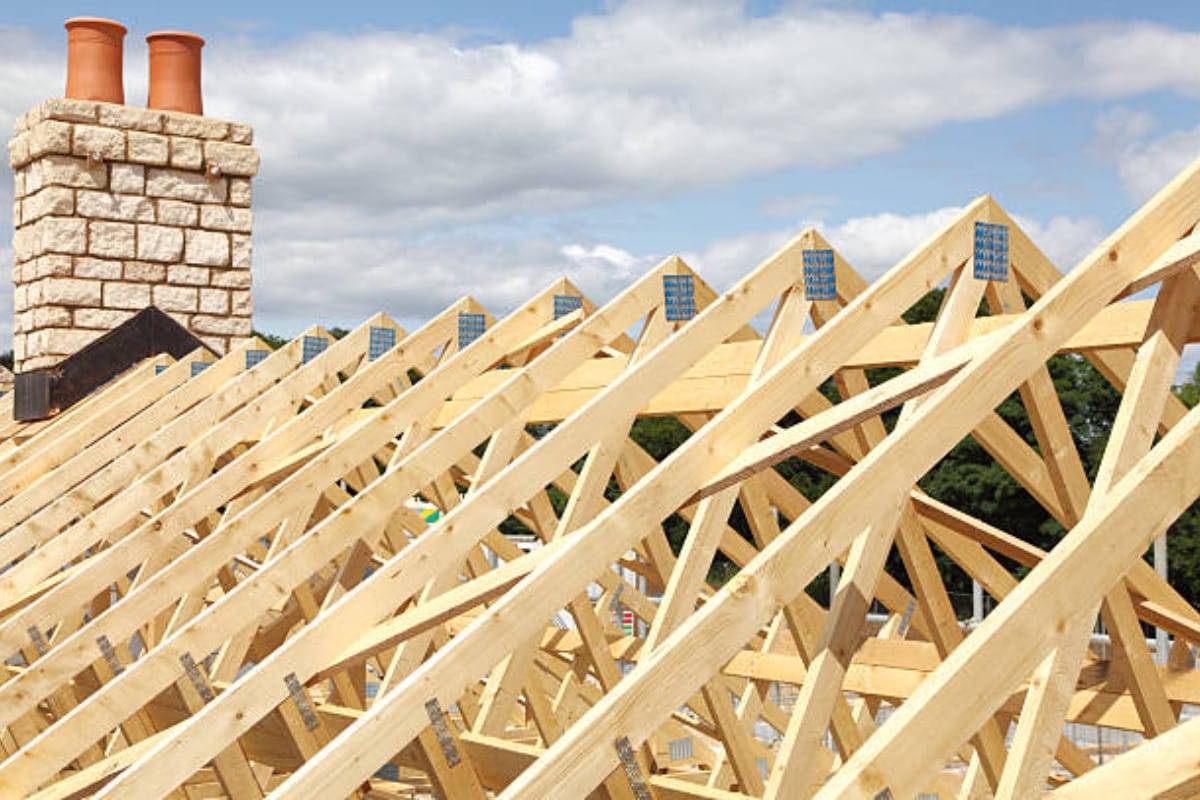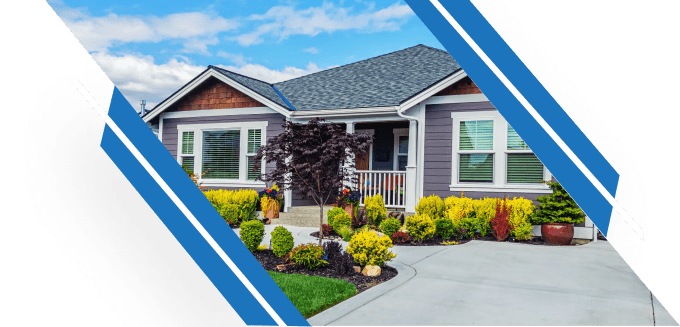Ever wondered what makes a roof strong and reliable? Let’s discuss roof joists, a lesser known but incredibly useful part of your roof. Although they might not be the first things that pop to mind when you think of your home, they are very important to maintaining the structural strength of your roof. They are essential for maintaining overall stability and for supporting the roof. In this blog post, we will delve into the definition of roof joists and their significance.
What Are Roof Joists?
Roof joists are horizontal beams that support the roof structure. They are typically made from materials such as timber or steel. They run along the top of your walls, creating a framework for the roof and help it withstand various loads such as wind, snow, and foot traffic. They distribute these loads to other supports, like primary beams, walls, or columns.
Roof joists run parallel to each other and are spaced usually between 12 and 24-inches apart. The size, shape, spacing, and material of the roof joists depend on factors such as the size of the building, the span of the joists, your location, and the weight bearing requirements.
Why Are Roof Joists Important?
Roof joists are the solid base for your roof. They support the weight of the roof, making sure it doesn’t come crashing down. Proper installation and regular maintenance of roof joists are extremely important. If they are damaged or not installed correctly, this can lead to serious consequences, like leaks or even a sagging roof.
Let’s look at it this way: if your roof is a giant umbrella, roof joists are the sturdy spokes that keep it from collapsing in the wind. Here are some reasons why roof joists are important:
- Load Distribution: The weight of the roof is distributed to supports, beams, walls, or columns below by way of roof joists. This cooperation assures the strength and stability of the roof down to the building’s foundation.
- Support for Roofing Materials: In order to help the roof withstand weather and protect what’s underneath, roof joists support components like the roof deck and shingles.
- Floor Support: Joists serve as the connection point between the base of the roof structure and the higher floors with a home, horizontally supporting the subfloor and floor coverings within the main structure.
- Collaboration with Other Roof Components: Together with other roof components like rafters, collar ties, and strongbacks, roof joists provide the strength and structure required for a sturdy roof.
- Prevention of Structural Spreading: To maintain the overall stability of a home, roof joists are essential in preventing the walls from spreading or leaning. If the roof joists are broken or not strong enough, it can cause problems with the structure of the whole building, making it less safe and unstable.
In summary, roof joists are essential for ensuring the stability, load bearing capacity, and overall structural integrity of a roof, making them a critical component of any building’s construction.
Common Roof Joist Issues and Their Solutions
Like any other roofing component, roof joists can have issues. They may weaken with time, or pests may decide to make them their home. These issues can have an impact on the strength and dependability of the roof. Some common problems include:
- Rot: Exposure to moisture can lead to rot in wood roof joists, weakening their structural strength.
- Sagging: As time goes by, roof joists might begin to bend or sag because of excessive weight or a lack of support. This can make the roof less stable.
- Insect Damage: Termites and other wood insects can seriously damage roof joists, which can seriously compromise the roof’s strength.
Regular checks and quick fixes can prevent these issues from becoming big headaches. From adding extra support to fixing a broken joist, there’s a solution for every hiccup.

Maintenance and Repair:
To ensure the longevity and effectiveness of roof joists, it is essential to address these issues through proper maintenance and repair:
- Timely Inspection: Regular inspections by professionals can help identify early signs of rot, sagging, or insect damage, allowing for quick intervention.
- Rot Repair: If they find rot, it’s important to fix it right away by repairing or changing the affected roof joists. This stops more damage to the structure.
- Reinforcement: Roof joists may require additional support in order to regain their strength and stability if they begin to sag or are showing signs of age.
- Insect Control: Taking precautions against insects, such as treating wood or using other materials, can prevent damage to roof joists.
By addressing these common issues and implementing appropriate maintenance and repair measures, homeowners can ensure the longevity of their roof joists, and the overall safety and stability of the building.
How to Identify Issues
Here’s a comprehensive checklist for homeowners trying to identify potential issues with roof joists:
Exterior Roof Inspection:
- Keep an eye out for signs of pests, like nests, materials that look chewed, or scratch marks.
- Take a look at your roofing shingles thoroughly. Look for any loose or missing shingles, and see if they’re split, twisted, or uneven. Also, make sure there are no protruding nails.
- See how well maintained the walls are directly below the roof. Make sure the shingles hang correctly over the gutters and eaves, and check them to ensure that everything surrounding the roof is functioning properly.
- Check for any built up debris, tree branches hanging over the roof, potentially unsafe or clogged gutters, and poorly installed flashing or materials.
Interior Inspection:
- Look for cracks and signs of sagging in the roof deck in the attic and turn off all lights to check for sunlight peeking through.
- Check the amount of airflow through the attic and make sure the vents are letting air in properly.
- Look for leaks around vents, chimneys, and any holes that go outside and pay attention to any signs of condensation or mold.
- Inside the house, look for cracks just below the roof in the ceiling and at the tops of the walls.
Conclusion
Although they may not be the main attraction, roof joists are the unnoticed protectors that hold up the structure of your roof. They provide significant support to the roof, making sure the whole building stays strong and safe. It’s crucial to take care of your roof and inspect the joists to make sure your house stays secure for years to come. Understanding how roof joists work and their common issues can help you implement proper repair techniques, protecting your home for a long time.
Professional Roof Inspections From Southshore Roofing & Exteriors
Having qualified professionals, like from Southshore Roofing & Exteriors, check your roof regularly is important for the longevity of your home. With their expertise, they make sure the roof joists are in good shape and working as they should. Their experts have the tools and knowledge to find issues to catch problems early when they’re easier to fix.
These professional inspections aren’t just about finding problems – they’re also about saving money. The team SouthShore Roofing & Exteriors can catch small issues early, which means homeowners can avoid big, expensive repairs later on. Call us today at (813) 400-3329 to schedule a free roof inspection!
FAQs
A. Roof joists are usually made of wood, steel, or composite wood products. The material picked depends on factors like how long they need to be, how much weight they have to hold, and the building codes and regulations in the area.
A. Roof joists run horizontally and hold up the roof base, while rafters slant and support the roof deck. Both work together to make a sturdy roofing system.
A. Sheathing, subflooring, and similar materials attached to each joist provide added support. These materials contribute to the overall stability and strength of the roof structure.
A. A ceiling joist is a horizontal beam that holds up the ceiling. It carries the weight of everything above, like the ceiling itself, drywall, lights, and air vents.




